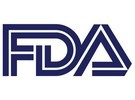 "It is my great privilege to announce FDA’s New Era of Smarter Food Safety Blueprint. We were originally going to make this announcement in March, but as you all are well aware, we were forced to turn our attention to addressing the public health emergency posed by the COVID-19 pandemic."
"It is my great privilege to announce FDA’s New Era of Smarter Food Safety Blueprint. We were originally going to make this announcement in March, but as you all are well aware, we were forced to turn our attention to addressing the public health emergency posed by the COVID-19 pandemic."
"In the months that have followed, it has become even clearer — from our experiences with the pandemic and the lessons we have been learning as part of the FDA’s response to it — just how essential the actions outlined in this blueprint are and, if anything, that they are more important now, than ever."
"Whatever theoretical or aspirational aspects there were to this blueprint before the pandemic, those have been propelled into concrete and essential action plans. I’ll explain what I mean as I get into the details of just how we will be leveraging new technologies and approaches to create a more digital, transparent and safer food system."
"I want to point out that food safety was high on my radar even before I’d come to the FDA. I’d heard about the New Era of Smarter Food Safety initiative and, upon arrived at the Agency, it was one of the first things I wanted to learn more about. That’s in part because it seemed to align closely with the core values that have guided me in my work as a medical and public health professional: to apply the best medical science and most rigorous data to the work; to promote integrity and transparency; and to advance innovation and discovery."
"So, when I arrived at the FDA last December, there was no doubt that some of the first people I wanted to speak with were the leaders of FDA’s leadership on foods, Frank Yiannas, FDA’s Deputy Commissioner for Food Policy and Response, Susan Mayne, the director of our Center for Food Safety and Applied Nutrition, Steve Solomon, the director of our Center for Veterinary Medicine, and Judy McMeekin, the Associate Commissioner for Regulatory Affairs."
"These leaders highlighted the enormous opportunities we have to use cutting edge science and technology in support of our ability to help ensure the safety of the American public."
"And they explained just how the New Era blueprint intends to do that, by incorporating input from external stakeholders in industry, our state partners, and multiple levels of experts within FDA’s foods program."
Building on FSMA
"The blueprint outlines a path forward that builds on the work the FDA has already done through implementation of the FDA Food Safety Modernization Act (FSMA)."
"As you know, FSMA has been a centerpiece of our work to help ensure food safety and prevent foodborne illnesses through the use of science and risk-based standards. The authority granted by FSMA enables a flexible framework that is adaptable to the changing food environment as science and technologies evolve."
"The blueprint we release today represents the next stage in this process — a commitment we are making to the American people that we will work as fast and effectively as we can, as fast and effectively as we can, to help ensure that we have the safest food system in the world."
"And we’ll do this in part by incorporating the use of the most modern technologies that are already in use in society and the business sector."
"Some of this innovation is already creating a revolution in food production, supply, and delivery. These developments offer great opportunity, but also pose many challenges, some of which are complicated by an increasingly complex global supply chain."
"I want to note that while the New Era has a strong emphasis in the application of new technology, it’s not just about technology. It’s about using that technology to build and put in place more effective approaches and processes."
Enhanced Traceability
"I’d like to spend a few minutes going over the core elements of the blueprint. The first is tech-enabled traceability. This is one of those areas that we’ve learned during the pandemic has utility beyond our response to outbreaks of foodborne illness."
"One of the challenges we’ve faced over the years is recurring outbreaks of illnesses associated with the consumption of certain foods. What this daunting problem underscores is the critical importance of the FDA working with industry so that we can rapidly trace a contaminated food to its source. And when I say rapidly, I mean minutes, not days, weeks, or even longer."
"We want to explore ways to encourage companies to adopt tracing technologies and also to harmonize efforts to follow food from farm to table. We should strive to speak the same language, by espousing similar data standards across government and industry for tracking and tracing a food product."
"During the pandemic we realized that widespread traceability provides greater supply chain visibility. This, in turn, can help the FDA and the food industry anticipate the kind of imbalances in the marketplace that led to temporary shortages of certain commodities and created food waste when producers lost customers because restaurants, schools, and other sites temporarily closed."
"In addition, enhanced traceability, coupled with advanced analytical tools, could help us spot potential problems in advance and help us prevent or lessen their impact."
For the full statement, please click here.









